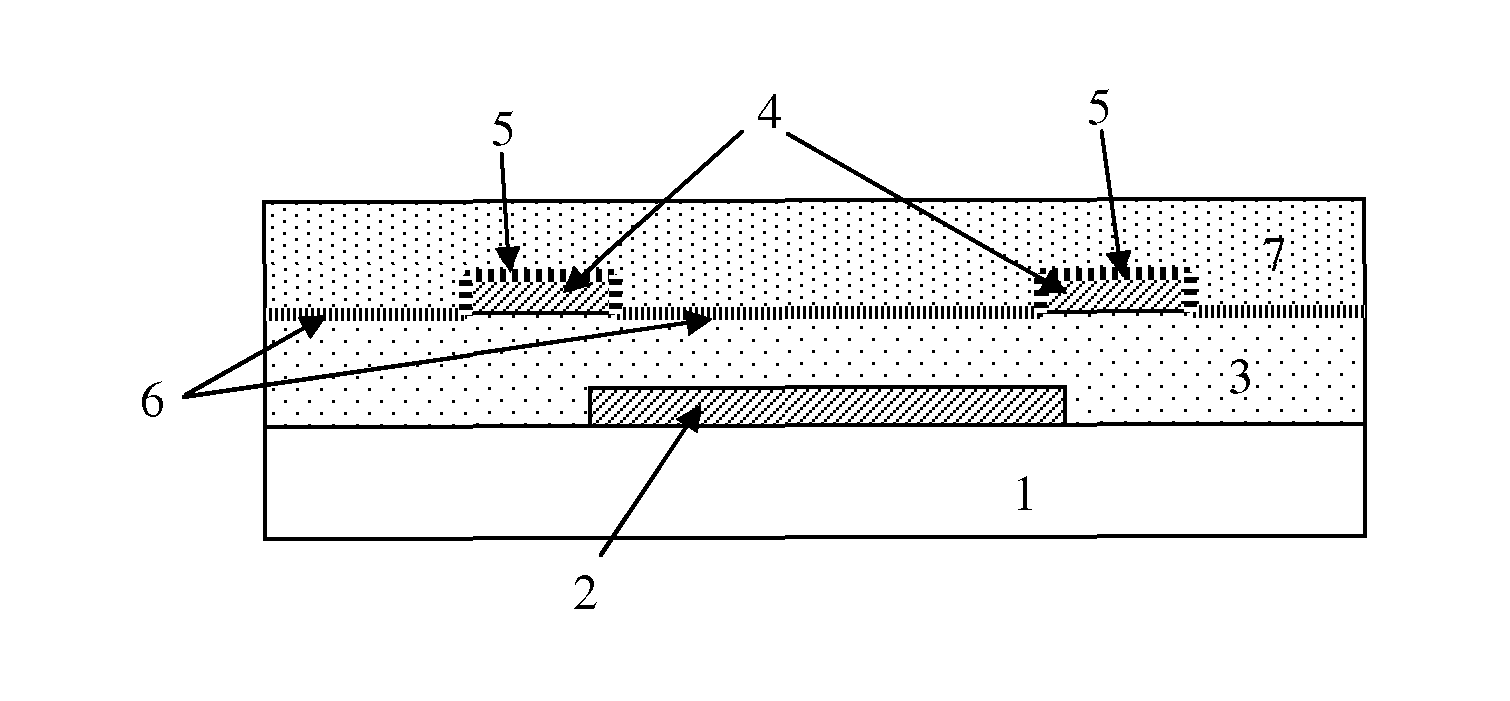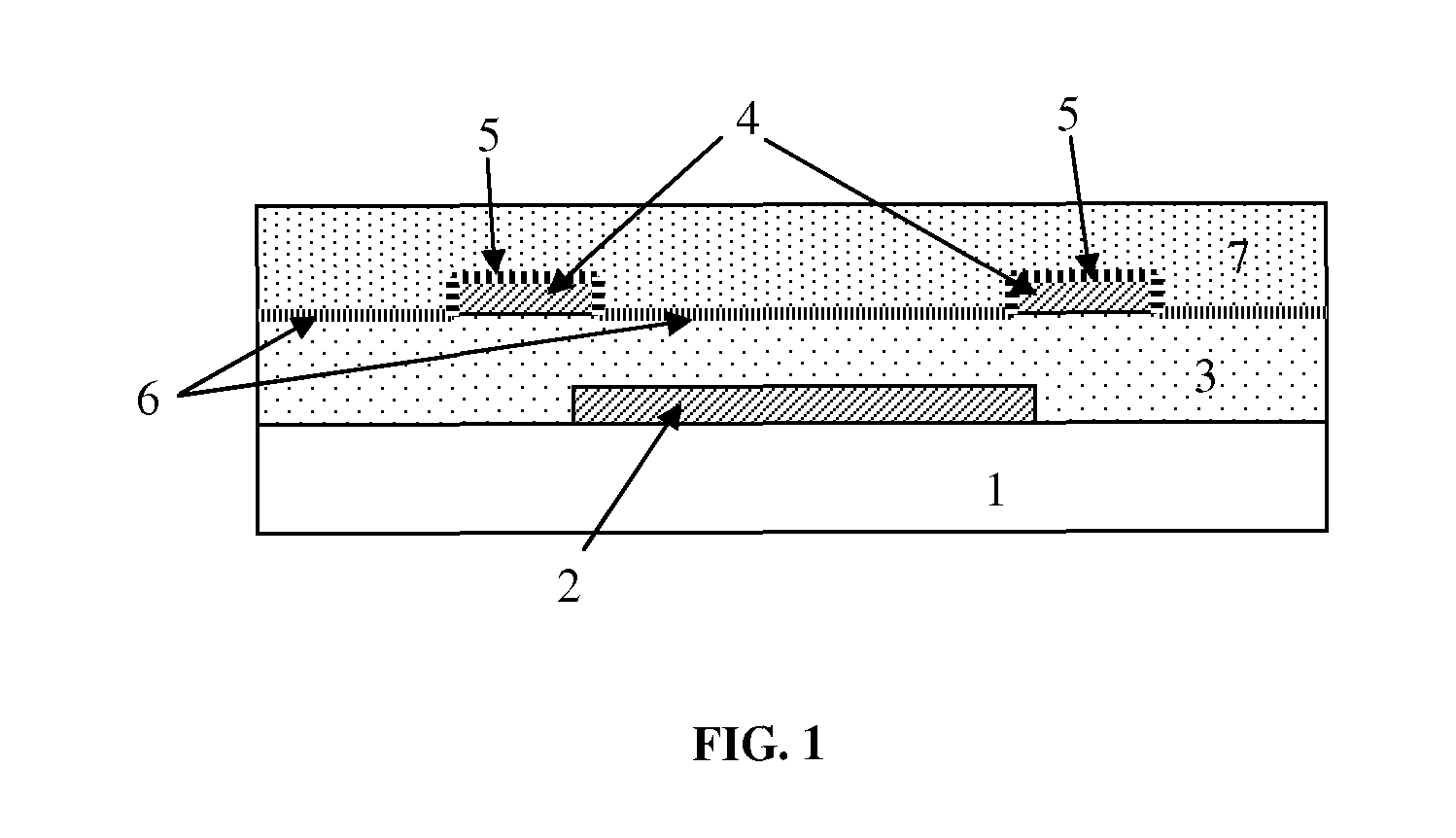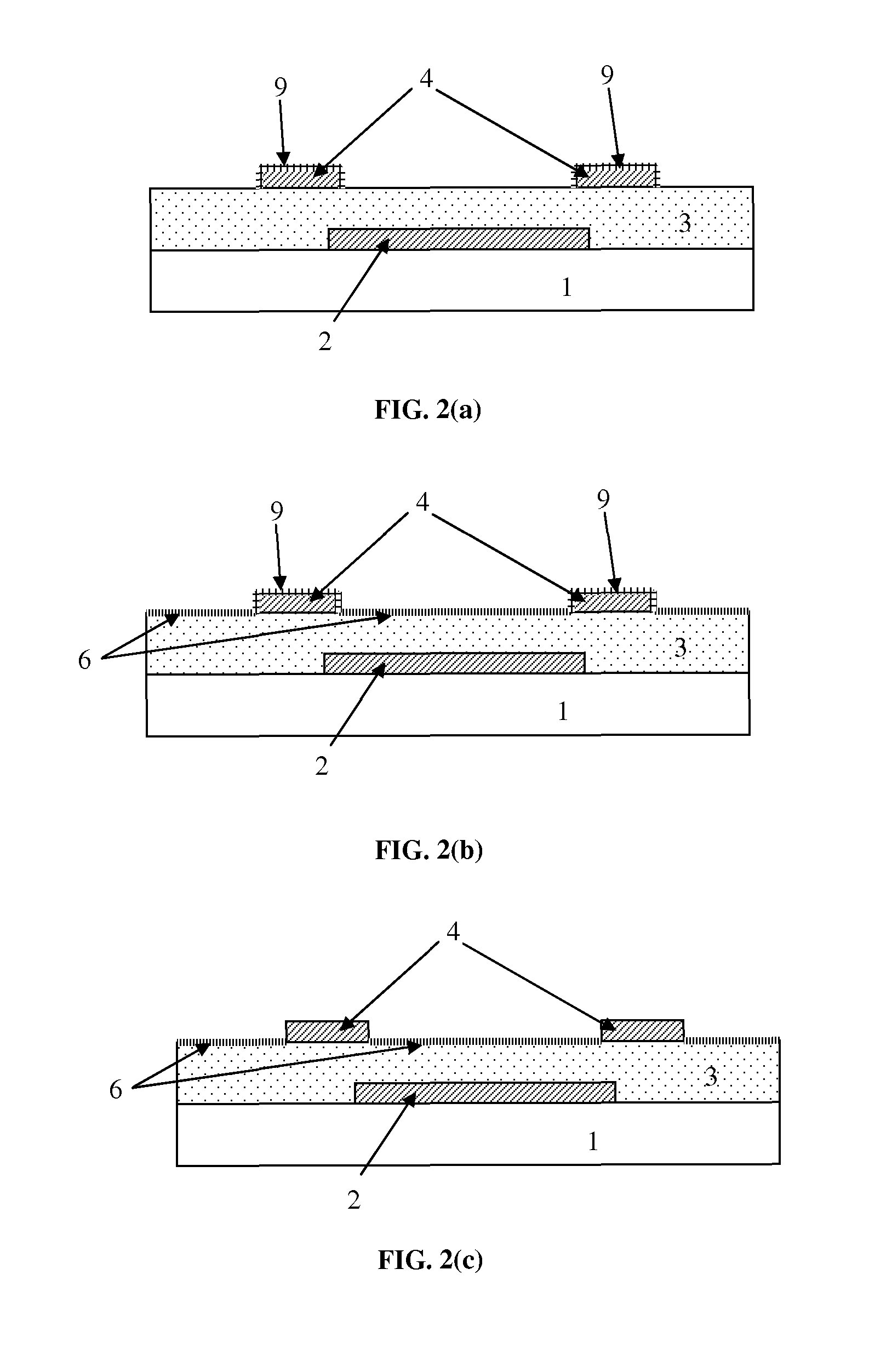Method for Fabricating Organic Devices
a technology of organic devices and manufacturing methods, applied in the direction of solid-state device manufacturing, electric devices, semiconductor/solid-state device manufacturing, etc., can solve the problems of unstable silane layer on gold (oxide), less uniform surface, and non-uniform thickness of metal contacts, etc., to achieve good morphology, good mobility, and good performance
- Summary
- Abstract
- Description
- Claims
- Application Information
AI Technical Summary
Benefits of technology
Problems solved by technology
Method used
Image
Examples
example 1
Au Bottom Contact Transistors
[0144]Au bottom-contact organic transistors were prepared by a fabrication process using lift-off for the formation of the bottom metal contacts. In the experiments, silicon substrates comprising a common aluminum gate and a 140 nm thick dielectric layer (silicon dioxide) were used. After cleaning of the substrate a patterned photoresist layer was provided, followed by a metallization step comprising sputtering of a 20 nm thick gold layer and a 5 nm thick aluminum layer. Next a lift-off step was performed in an ultrasonic bath with acetone. In the transistor structure, the 20 nm thick gold layer forms the source and the drain of the transistor. The 5 nm aluminum layer acts as a temporary protection layer in accordance with an embodiment of the present invention.
[0145]After wet cleaning and UV-ozone cleaning (15 minutes) of the samples, a silane treatment was performed wherein PETS (phenylethyltrichlorosilane) was provided from the vapor phase at a temper...
example 2
Ag Bottom Contact Transistors
[0147]Experiments were performed wherein Ag bottom contact transistors were fabricated according to a method according to an embodiment of the present invention. A metallization step was performed comprising providing a stack of a 15 nm thick Au layer (acting as an adhesion layer) and a 20 nm thick Ag layer (acting as bottom contact metal from which also an “injection layer” can be made by partial chemical reaction between the silver and an electron acceptor). Next a 5 nm thick Al protection layer was provided on the Ag layer. Patterning of the Au adhesion layer, the Ag layer and the Al protection layer was performed using a single lift-off step. After UV-ozone cleaning and silanization (formation of a first surface modification layer), the Al protection layer was removed by reaction with diluted hydrochloric acid (1 volume concentrated HCl+5 volumes H2O) during 10 min. Next the surface of the Ag layer was modified by a chemical reaction with an electron...
example 3
Pd Bottom Contact Transistors
[0149]Experiments were performed wherein Pd bottom contact transistors were fabricated according to a method according to an embodiment of the present invention. A metallization step was performed comprising providing a stack of a 5 nm thick TiW layer (acting as an adhesion layer) and a 20 nm thick Pd layer (acting as bottom contact metal). Next a 5 nm thick Al protection layer was provided on the Pd layer. After UV-ozone cleaning and silanization (forming a first surface modification layer), the Al protection layer was removed by reaction with diluted sulfuric acid (1 volume concentrated H2SO4+5 volumes H2O) during 10 minutes. For the silanization step, two different silanes were used: for one group of transistors OTS (octadecyltrichlorosilane) was used as a first surface modification layer, and for another group of transistors PETS (phenylethyltrichlorosilane) was used as a first surface modification layer.
[0150]FIG. 11(a) shows the IDS versus VGS char...
PUM
 Login to View More
Login to View More Abstract
Description
Claims
Application Information
 Login to View More
Login to View More - R&D
- Intellectual Property
- Life Sciences
- Materials
- Tech Scout
- Unparalleled Data Quality
- Higher Quality Content
- 60% Fewer Hallucinations
Browse by: Latest US Patents, China's latest patents, Technical Efficacy Thesaurus, Application Domain, Technology Topic, Popular Technical Reports.
© 2025 PatSnap. All rights reserved.Legal|Privacy policy|Modern Slavery Act Transparency Statement|Sitemap|About US| Contact US: help@patsnap.com



